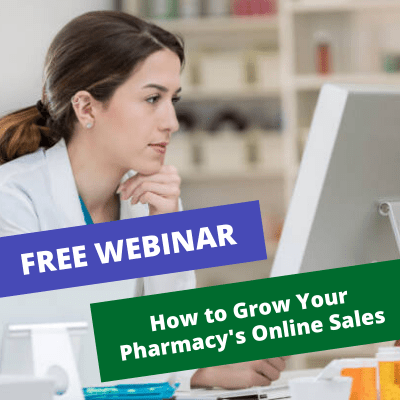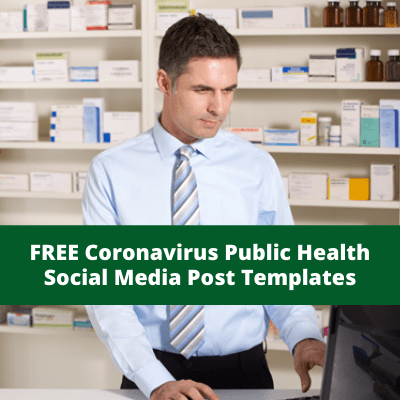7 Proven Methods to Reduce Bounce Rate on Your Pharmacy Website
Interpreting and reducing the bounce rate of your pharmacy website requires a good background in SEO and marketing strategy. When we say users “bounce,” it means that they viewed a page of your site or a landing page but didn’t engage further.
Consequently, high bounce rates hurt your site’s conversion rates. After all, if site visitors leave your site before you have a chance to convert them into subscribers or customers, your business doesn’t grow at all.
In this article, we’ll show you how to interpret your bounce rate and five proven methods for lowering it down to increase conversions.
Bounce Rate in a Pharmacy Website
Generally, bounce rate denotes the percentage of site visitors that land on your website but decide to leave (hit the back button) before viewing a second page.
Various reasons occur why visitors leave your website right away. Nevertheless, you didn’t provide them the information or the product that they desire to purchase at that moment of search.
If your website doesn’t function user-friendly, users tend to leave your platform before making any decision. While some bounces occur naturally, you still need to try to reduce the bounce rate to boost conversions and grow your business.
What is the bounce rate?
Bounce rate refers to the metric that measures the percentage of people who land on your website and do completely nothing on the page they entered. So, they don’t click on a menu item, a ‘read more link, or any other internal links on the page.
Also, it means that the Google Analytics server doesn’t receive a trigger from the visitor. A user bounces when there has been no engagement with the landing page and the visit ends with a single-page visit.
So, using bounce rate as a metric indicates the quality of a webpage and/or the “quality” of your audience. By the quality of your audience, we mean whether the audience fits the purpose of your site.
7 Quick and Easy Methods to Reduce Bounce Rate
Ready to put a bounce rate reduction plan into action? Try these 6 things.
1. Boost Site Speed to Improve Bounce Rate
Your website’s speed and performance play a large role in whether visitors want to stick around or not. The longer it takes for your site to load, the faster your site visitors become annoyed and leave your site without viewing another page.
In fact, site visitors expect your website to load within 2 seconds. So, anything slower than that leads to site abandonment and an increase in your bounce rate.
Plus, with Google’s Core Web Vitals applied to search results in 2020, your site needs fast elements to compete with your competitors in organic search.
Some of the best ways to optimize your site for faster page loading include using a CDN, optimizing images, investing in a quality web host, monitoring plugin use, and using a caching plugin.
2. Match Search Intent
Using the search intent of a user works importantly as part of optimizing your content that many people often miss. The easiest way to explain search intent occurs in how you find products in an eCommerce store.
Let’s say that you decided to write an article on how to write a great review for medicine or vitamins in 2022. So, you need to do some keyword research through the best popular search engines.
You need to find it by typing “how to write a review for medicine products” with thousands of searches per month, and launch into writing your article.
Notably, publishing an article with the said topic or any great topic in the medical field ends up ranking on the first page of results. But, it ends up with a pretty big bounce rate because of the competition.
How to stand from the competition?
Before writing your article, you need to run a search for your focus keyword or phrase. The article you wrote performs great, but you did not place it in a list format.
If you searched first in a search engine platform, you probably noticed that a numbered guide takes the top spot. Your article needs to use some general tips as headings instead of making it an easy-to-follow guide.
So, when a user searched “how to write a review for medicine products”, they need to find an easy-to-follow guide, not just a general tips article.
So, always run your search for yourself. Then, think critically about the users’ search intent before writing.
3. Have a Clear, Focused Call to Action
Getting your site visitors to convert delicately dances between asking for something and not asking for too much. So, your call to action needs to have keywords or signals with the following:
- Impossible to miss
- Enticing
- As easy and fast as possible for the user to complete
Describe what you sell among the site visitors as soon as they land on your site. Then, make sure you have a clear call to action so visitors know what steps you want them to take.
In addition, ensure to write honest and clear content about what you offer to prevent people from wanting to leave right away. With a clear and compelling CTA, try to include the word “free” and says “no credit card required.”
4. A/B Test Everything to Lower Down Bounce Rate
Generally, routine A/B testing helps you identify little (or big) website tweaks that help reduce your bounce rate. After all, you get high bounce rates because of something minor like the color of your call to action button, or the way your landing page guides visitors through your sales funnel.
For example, after conducting an A/B test of call to action button colors, businesses realized that 21% more people clicked on the red button than the green. Thus, you successfully increased conversions thanks to button colors that prevent people from leaving your site by asking them to click the flashy buttons.
Luckily, Google Optimize works as a free tool from Google that helps you run easy A/B tests on your website. Explore the tool as it includes instructions about how to use it successfully for your business and how to hook it up to your WordPress website.
5. Target Users Who Abandon Your Site
Sometimes people decide to leave your website no matter what you do. However, there’s one last-ditch effort you can put in to keep them from bouncing.
By targeting users who tend to bounce from your site using a targeted message convinces them to subscribe before leaving for good. So, you need a good writer to create a compelling copy to prevent them from choosing another competitor.
Also, try to give your site visitor an incentive to come back. Offer them a coupon to use on their next visit, free shipping on their next purchase and access to exclusive content.
Include a guide that educates your bouncing visitor about the value of your company. And, don’t forget to add the subscription form to capture their email address and target them in your next email campaign.
6. Use Internal Links Wisely for a Low Bounce Rate
Internal links work as one of the ways to get visitors to click further into your website. That said, you don’t need to overwhelm your content with them, either.
Think of internal links like a logical sitemap. If you mention something that you have more content about on your site somewhere, link to it. Thus, you create a natural flow further into your website where the visitors follow.
Just follow these couple internal linking best practices:
- Don’t overdo it. Using more than a link every 3 sentences or so makes your content harder to read and overwhelms the reader.
- Relevance functions as your primary key. If a user follows a link and finds irrelevant content, they likely give up and leave. Every time you add an internal link, ask yourself if it helps the search intent of the user.
7. Use Google Analytics to Calculate Bounce Rate
According to Google, marketers need to calculate the bounce rate using the following way:
Bounce rate works with single-page sessions divided by all sessions or the percentage of all sessions on your site. Users view only a single page and trigger only a single request to the Analytics server.
In other words, bounce rate collects all sessions where a visitor only visited one page and divides it by all sessions.
Having a high bounce rate means three things for your business:
- The quality of the page functions is low. Your website possesses nothing inviting to engage with.
- Your audience doesn’t match the purpose of the page, as they won’t engage with your page.
- Visitors found the information that they were looking for from someone else’s site.
How Bounce Rate Affects Your Pharmacy Website’s SEO Performance?
Bounce rate visibly appears Google Analytics as an SEO ranking factor. Google takes Google Analytics’ data as a ranking factor because the tool provides reliable data.
Luckily, several Googlers say the same thing: Google doesn’t use Google Analytics data in its search algorithm. But, of course, you need to make sure that when people come from a search engine to your site, they don’t bounce back to the search results as a ranking factor.
From a holistic SEO perspective, you need to optimize every aspect of your site. So, looking closely at your bounce rate help you optimize your website even further, which contributes to your SEO.
How to interpret bounce rates?
The height of your bounce rate and whether that’s a good or a bad thing depends on the purpose of the page.
Informative Website and the High Bounce Rate
If the purpose of the page is purely to inform, then a high bounce rate isn’t a bad thing per se. Of course, you like people to read more articles on your website, subscribe to your newsletter, and so on.
But when they only visited a page to, for instance, read a post or find an address, then expect them to close the tab after they finished reading.
Creating a segment dedicated to new visitors occurs as a clever thing to do when you own a blog. If the bounce rate amongst new visitors appears high, think about how to improve their engagement with your site as you need new visitors to engage with your site.
Sales or eCommerce Website with Low Bounce Rate
If the purpose of a page is to actively engage with your site through sales, then a high bouncing is a bad thing. Let’s say you have a page that has one goal: get visitors to subscribe to your newsletter.
If that page has a high bounce rate, then you need to optimize the page itself. By adding a clear call-to-action, a ‘Subscribe to our newsletter’ button, for instance, you lower down your bounce rate.
However, other reasons cause a high bounce rate on a newsletter subscription page. In case you’ve lured visitors in under false pretenses, these site visitors don’t engage with your page.
They probably expected something else when landing on your subscription page. On the other hand, by being clear from the start about the visitor’s expectations on the subscription page, your website receives a lower bounce rate.
Thus, the quality of the visitors affects the motivation to get the newsletter – and not necessarily about the quality of the page.
Interpreting Bounce Rate and Conversion
If you look at bouncing from a conversion perspective, then bounce rate acts as a metric to measure success. For instance, changing the design of your page helps your business to convert better audiences and higher profit.
Then, make sure to keep an eye on the bounce rate of that page. If you see an increase in bounces, the change in the design you made occurred as a wrong decision on your end which explains the low conversion rate you have.
Also, try to check the bounce rate of your most popular pages. As soon as you identify the pages with a low bounce rate and a high bounce rate, you need to compare them and learn the best practices you need.
Another way of looking at your bounce rate comes from a traffic sources perspective.
- Which traffic sources lead to a high or a low bounce rate?
- Does sending newsletters help your audience grow?
- Do you need to set up a referral website that sends a lot of traffic to your main webpage?
- What factors cause your high bounce rate in general?
And if you tried to run an AdWords campaign, you need to keep an eye on the bounce rate of that traffic source as well.
How to Identify a Bounce?
There are five typical signs:
- Clicking the browser back button
- Entering a new URL in the address bar
- Closing the browser window or tab
- Staying inactive for more than 30 minutes and the session times out
- Visitors click an outbound link
Some benchmark bounce rate averages for the most common kinds of websites:
- 20% – 45% for e-commerce and retail websites
- 25% – 55% for B2B websites
- 30% – 55% for lead generation websites
- 35% – 60% for non-eCommerce content websites
- types 60% – 90% for landing pages
- 65% – 90% for dictionaries, portals, blogs, and general websites that revolve around news and events
Most common webpages with reasonable high bounce rate numbers:
- Blog posts have an expected 65% or much higher bounce rate numbers. Visitors usually leave after getting value from the relevant information in an article.
- Contact us pages remain as a common and accepted type of page that receives high bounce rate percentages because visitors access basic information such as phone, email, or address.
- Form submission pages always have high bounce rate numbers. Your visitors’ main purpose is to complete the submission process and leave immediately.
- Confirmation pages usually received a high bounce rate. It indicates the last step when a visitor completes a goal and is ready to leave.
- Checkout pages are not the desired landing page and entry traffic to these pages is often low. The corresponding bounce rate remains high.
- Customer support pages have often high bounce rate figures on quality support websites. It functions as a positive signal because visitors answered their questions and don’t need to call customer support.
Fix Your High Bounce Rate Today!
Our SEO services are uniquely personal and unequivocally genuine to interpret and lower down your bounce rate. We leverage years of experience working alongside independent pharmacy brands of all sizes, dedicated to advancing pharmacy business with profitable results.
Learn more about our transparent, comprehensive process by contacting us today!
Keyword: Bounce Rate




